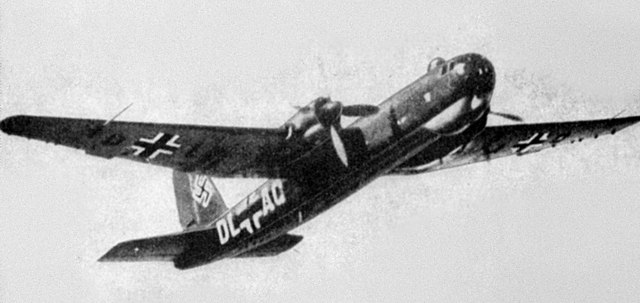The Handley Page Victor is a British jet-powered strategic bomber developed and produced by Handley Page during the Cold War. It was the third and final V bomber to be operated by the Royal Air Force (RAF), the other two being the Vickers Valiant and the Avro Vulcan. Entering service in 1958, the Victor was initially developed as part of the United Kingdom's airborne nuclear deterrent, but it was retired from the nuclear mission in 1968, following the discovery of fatigue cracks which had been exacerbated by the RAF's adoption of a low-altitude flight profile to avoid interception, and due to the pending introduction of the Royal Navy's submarine-launched Polaris missiles in 1969.
Handley Page Victor
Victor B1A XH588 at an East Anglian Battle of Britain day event, 1959
Victor B.2 at RAF Wittering undergoing pre-flight preparations
Victor K.2 of No. 55 Squadron RAF in 1985; note the deployed refuelling drogues.
A strategic bomber is a medium- to long-range penetration bomber aircraft designed to drop large amounts of air-to-ground weaponry onto a distant target for the purposes of debilitating the enemy's capacity to wage war. Unlike tactical bombers, penetrators, fighter-bombers, and attack aircraft, which are used in air interdiction operations to attack enemy combatants and military equipment, strategic bombers are designed to fly into enemy territory to destroy strategic targets. In addition to strategic bombing, strategic bombers can be used for tactical missions. There are currently only three countries that operate strategic bombers: the United States, Russia and China.
A contemporary U.S. Air Force strategic bomber, the Rockwell B-1 Lancer
The Sikorsky Ilya Muromets was designed by Igor Sikorsky as the first ever airliner, but it was turned into a bomber by the Imperial Russian Air Force.
The only operational strategic bomber with the Luftwaffe in World War II was the troubled Heinkel He 177.
A USAF B-2 Spirit stealth bomber.








